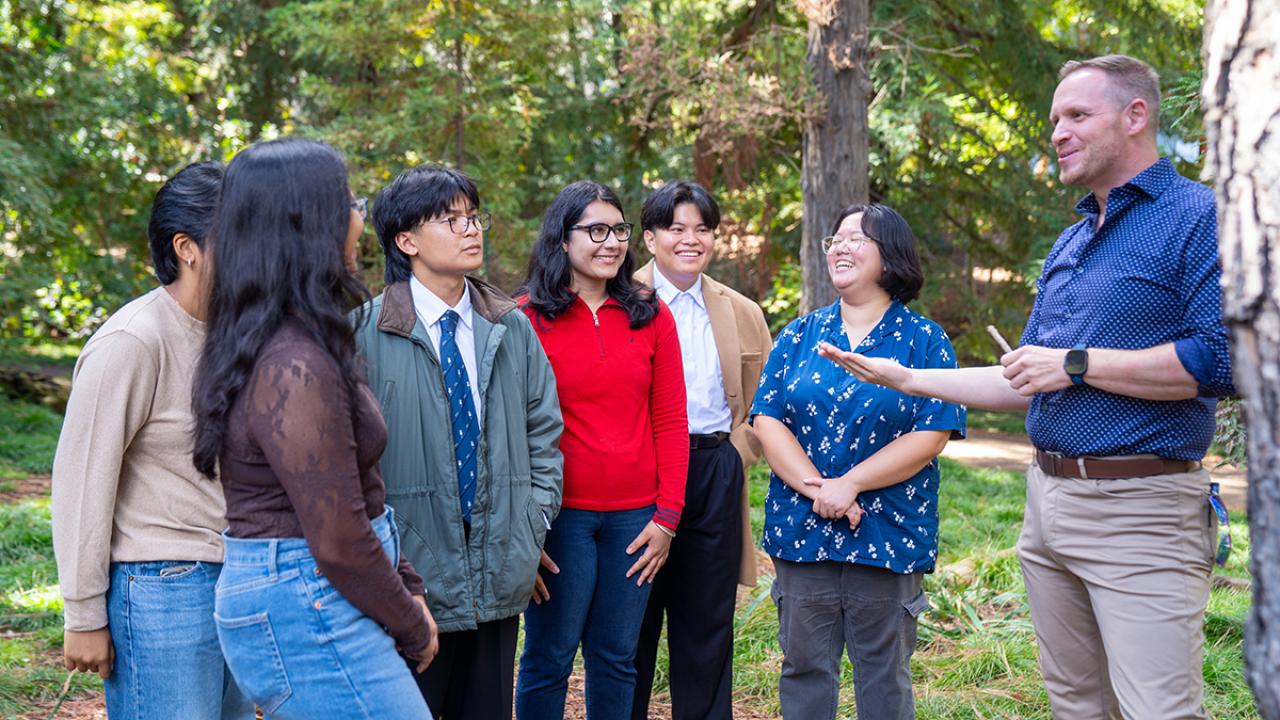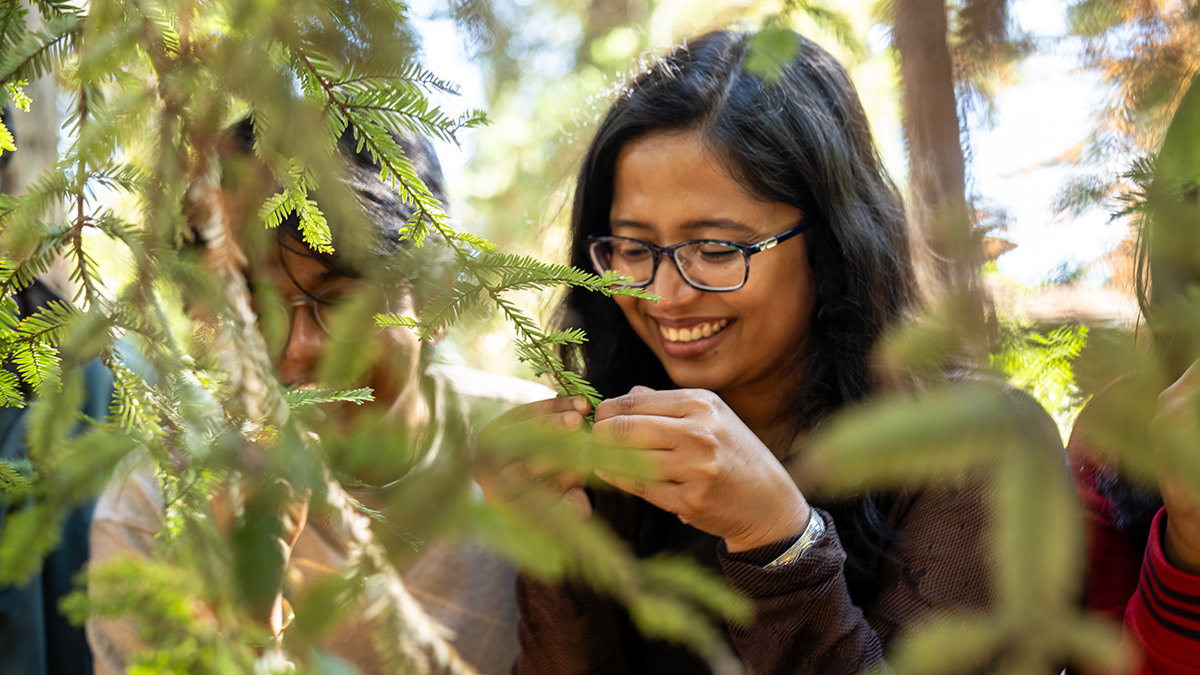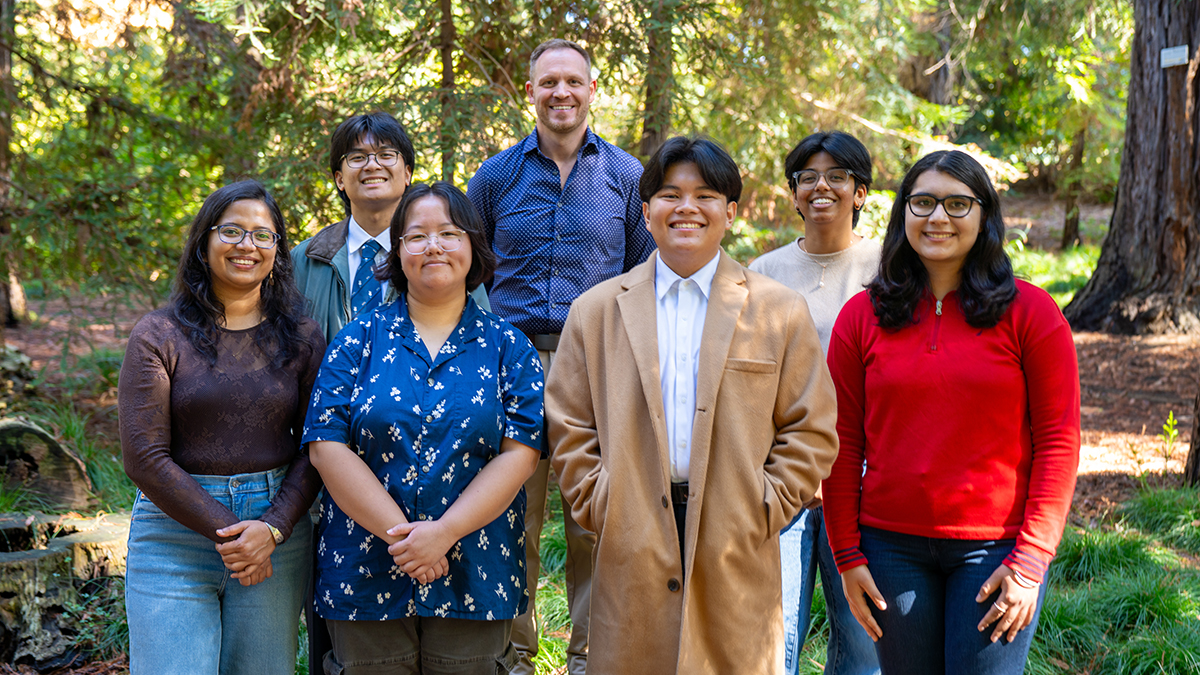
What’s in a Leaf? Students Map the Chemistry of Campus Plants
Catalog of plant compounds will help create an interactive database
Plants produce thousands of chemical compounds that help them attract friends and deter foes. Many of these compounds, or “metabolites,” have been harnessed by humans in fragrances, medicines, and biofuels.
During the 2025 spring quarter, CBS students began cataloging plant metabolites in the UC Davis Arboretum and Public Garden as part of a new Course-based Undergraduate Research Experience (CURE) course. Taught by Philipp Zerbe, a professor of plant biology, and postdoctoral scholar Farida Yasmin in Zerbe’s lab, the course had two broad aims: to give students the chance to engage in real research using cutting-edge technologies, and to kickstart a database showcasing the vast diversity of natural plant products on campus.
“Our goal is to create an interactive chemical map of the arboretum—based on data collected by students—that allows people to explore the diversity of natural plant products, their roles in nature, and their benefits to humans,” said Zerbe.
Experiential learning: providing authentic research experiences
CUREs aim to give students a taste of “real” research, and Zerbe’s course was no exception. It gave the students hands-on experience with metabolomics, a data-heavy science that aims to characterize and quantify the metabolites produced by an organism.
“Metabolomics is a rapidly advancing technology allowing us study metabolism in great detail, and it’s applied in all areas of fundamental research as well as human health and forensics testing applications,” said Zerbe. “It's a modern technology that students are not usually exposed to in their undergraduate study, which is one of the reasons I specifically included it in this class, so that they see first-hand how today’s analytical tools work.”
This year’s cohort included 33 students; almost all of whom were transfer students. “We wanted to give research opportunities to transfer students who may have had limited opportunities to take part in laboratory research before,” said Yasmin. “It was my first time working with transfer students, and seeing their level of motivation was amazing.”

Metabolite mapping in the Arboretum
To create the chemical database, Zerbe’s students visited the arboretum to collect samples, including leaves, bark, resin, and petals. Each student focused on a different plant species, and they also photographed the plants and noted their GPS coordinates.
Back at the lab, the students used chemical solvents to extract metabolites from each sample. Then, they used an instrument called a gas chromatography mass spectrometer to separate the different metabolites within each plant extract. By comparing the extracted metabolites to a library of known compounds, the students were able to identify the most common metabolites in each sample.
“This class really opened my eyes to the world of plant natural products,” said undergraduate student Nikhita Tandon, who joined Zerbe’s lab after taking the CURE class. “It was fascinating to connect these experiments with the genetic and biochemical pathways that allow plants to use compounds like diterpenoids for defense and adaptation.”
Overall, this year’s class catalogued metabolites from 36 species, including eucalyptus and conifer trees. Going forward, Zerbe hopes to teach the class on an annual basis and continue to expand the database to include more diverse species from the arboretum.
Future cohorts might also catalogue metabolites from outside of the arboretum in connection to ongoing research in Zerbe’s lab — for example, by sampling conifers from nearby Christmas tree plantations to contribute to Zerbe’s ongoing project to improve the aroma of Christmas trees.
Experiential learning = experiential teaching
Before taking the class, over 90% of the students had never handled basic laboratory instruments such as pipettes. At the end of the quarter, many of them had developed a budding interest in plant biology.
“Many of the students didn't have a plant background, but they were stoked to see how good plants are at producing different chemicals, and to learn about their connections with environmental and human health,” said Yasmin. “We were excited to have four students joining our lab as research assistants after taking the course.”
“As a transfer student, I was nervous to join a lab because I felt like I didn't have enough experience, but taking the CURE class was a great entryway into research,” said undergraduate Alya Samsudin, one of the students who joined Zerbe’s lab after taking the class. “It was really helpful to refresh on some basic lab skills, and it showed me what plant biology research actually looks like.”
Zerbe says that another benefit of the CURE class model is that it provides teaching and mentorship opportunities for postdoctoral fellows, graduate students, and undergraduates.
“Undergraduates who were already working in my lab helped as learning assistants in the class, which is an effective way to build community and lets them build their teaching and mentoring skills,” said Zerbe. “To me, that’s a big added bonus of these CURE classes.”

Media Resources
- Liana Wait is a freelance science writer based in Philadelphia. She has a Ph.D. in ecology and evolutionary biology and specializes in writing about the life sciences.
